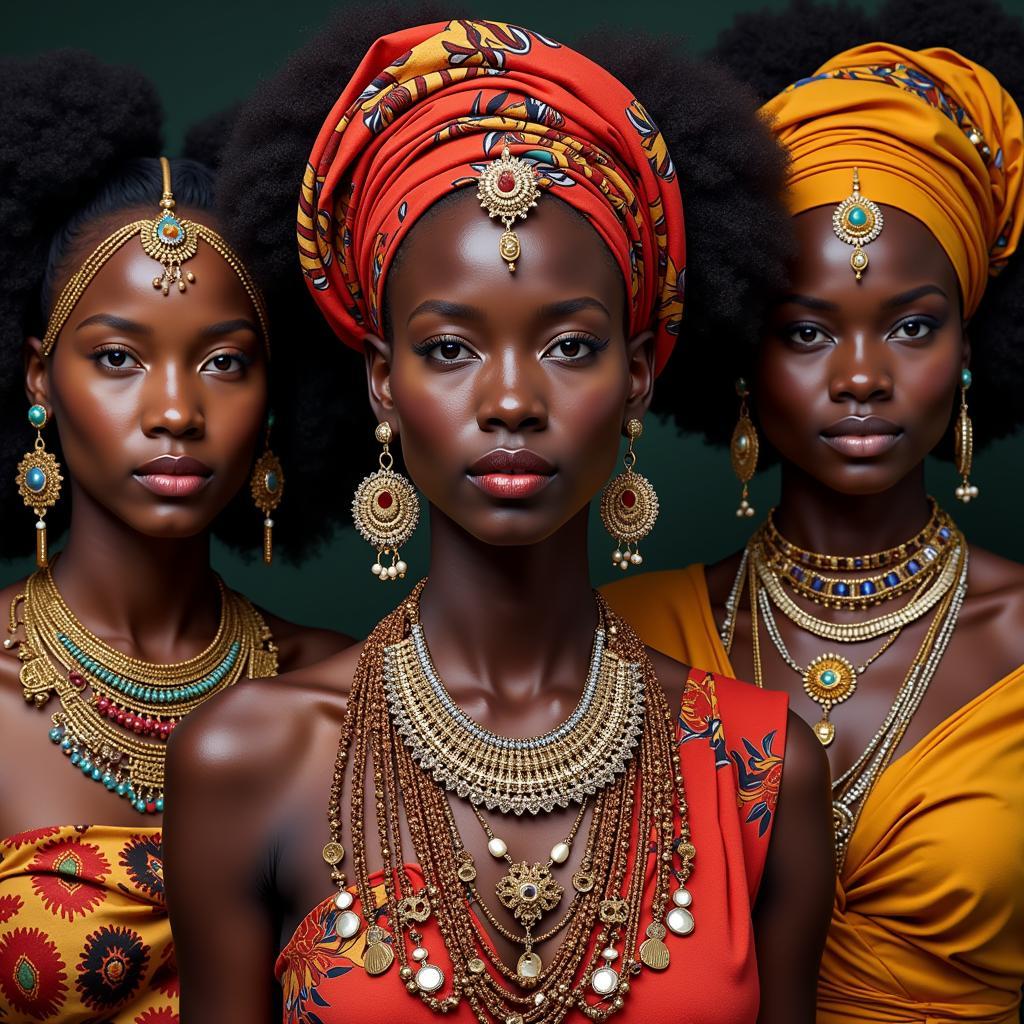African Eye Makeup: A Journey Through Culture, Beauty, and Tradition
From the sands of the Sahara to the lush rainforests of the Congo Basin, Africa is a continent pulsing with vibrant life and rich cultural heritage. Among its many treasures, the art of African Eye Makeup stands out as a powerful form of self-expression, ritual, and societal significance. More than just a beauty ritual, African eye makeup offers a fascinating glimpse into the diverse traditions and beliefs that have shaped the continent for millennia.
The Significance of Eye Makeup in African Culture
Throughout history, African cultures have used natural pigments and ingredients to adorn their faces and bodies. While body art varied widely across regions and ethnic groups, eye makeup consistently held a place of prominence. It served as a visual language, communicating social status, marital availability, tribal affiliation, or even spiritual beliefs.
Traditional Ingredients and their Symbolism
Unlike modern cosmetics, traditional African eye makeup relied heavily on natural ingredients, many of which carried symbolic meanings.
-
Kohl: This black powder, often made from ground antimony, galena, or burnt almonds, remains a staple across North Africa. Applied with a fine stick called a “mirwed”, kohl creates a dramatic outline, often extending beyond the eye for an elongated effect. Beyond its aesthetic appeal, kohl was believed to ward off evil spirits and protect the eyes from the sun’s glare.
-
Red Ochre: Found in abundance across Africa, red ochre symbolizes fertility, life, and ancestral spirits. Often used in celebratory makeup, red ochre was applied to the eyelids, brows, or as dots under the eyes.
-
White Clay (Kaolin): Symbolizing purity and spiritual cleansing, white clay was used in many cultures for ceremonial purposes. It was often applied around the eyes during rituals or as a mark of mourning.
Regional Variations and Styles
From the Berber tribes of North Africa to the Himba people of Namibia, African eye makeup styles are as varied as the continent itself.
-
North Africa: Bold, dramatic eyes are a hallmark of North African makeup. Kohl remains paramount, often accompanied by vibrant eyeshadows in shades of blue, green, and gold. Intricate henna designs on the hands and feet often complement the eye makeup.
-
East Africa: The Maasai people of Kenya and Tanzania are known for their elaborate beadwork and face painting. They often use red ochre and white clay to create striking geometric patterns around their eyes.
-
West Africa: In West Africa, the Fulani people are renowned for their intricate facial tattoos and use of indigo dye to create temporary designs around the eyes.
African Eye Makeup in the Modern World
While traditional practices continue to thrive, African eye makeup has transcended geographical boundaries and found its way onto international runways and beauty trends. Modern interpretations often combine traditional elements like kohl with contemporary colors and techniques, showcasing the versatility and enduring appeal of African beauty aesthetics.
From ancient rituals to modern fashion, African eye makeup offers a captivating window into a culture that celebrates individuality, heritage, and the power of adornment. It serves as a reminder of the beauty found in diversity and the enduring traditions that continue to inspire the world.

